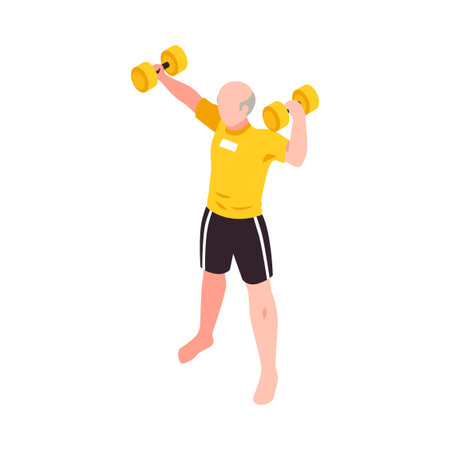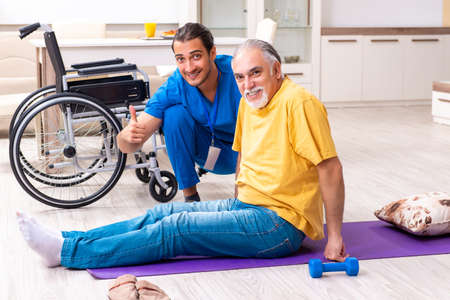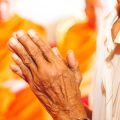1. Introduction: The Need for Balance Training among Indian Seniors
In India, the elderly population is steadily increasing, and with this growth comes a unique set of challenges, especially for residents in old age homes. Many seniors face not just physical limitations but also emotional and cultural changes as they adjust to communal living away from their families. One of the most significant health concerns is the risk of falls, which can lead to serious injuries and loss of independence. This issue is further complicated by age-related changes such as weaker muscles, joint stiffness, and reduced sensory perception. In Indian culture, maintaining ones dignity and self-sufficiency is deeply valued, making it even more important to address these concerns proactively. Balance training emerges as a vital solution, empowering seniors to move confidently, participate in daily activities, and uphold their cherished autonomy. With an innovative balance training program tailored to the needs of Indian seniors in old age homes, we can help preserve their health, spirit, and sense of belonging within their communities.
2. Culturally Tailored Assessment and Goal Setting
In the context of Indian old age homes, it is essential to assess each residents balance abilities in a way that respects their background and comfort level. Our innovative program uses locally relevant tools and clear instructions in both simple English and Hindi, making the process approachable for everyone. We begin by conducting initial assessments using familiar items such as chairs, small stools, or even traditional floor mats to check basic standing and movement balance. Instructions are delivered in both languages to make sure every resident understands and feels included.
Assessment Tools and Methods
| Assessment Tool | Description (English) | Description (Hindi) |
|---|---|---|
| Chair Stand Test | Ask the resident to stand up from a chair without using their hands. | बुजुर्ग को बिना हाथ का सहारा लिए कुर्सी से उठने के लिए कहें। |
| Tandem Walk | Walk heel-to-toe along a line on the floor. | फर्श पर एक लाइन के साथ एड़ी से पंजा रखकर चलना। |
| Single Leg Stand | Try standing on one leg for a few seconds with support nearby. | एक पैर पर कुछ सेकंड के लिए खड़े रहें, पास में सहारा हो। |
| Mild Obstacle Crossing | Step over small household objects like a rolled-up mat. | छोटी घरेलू चीजों जैसे कि लुढ़का हुआ चटाई के ऊपर पैर रखें। |
Culturally Sensitive Goal Setting
After assessment, we work together with residents to set achievable goals that respect their daily routines, traditions, and personal preferences. For example, if someone enjoys participating in morning prayers or community gatherings, we might set a goal of confidently walking to the prayer area without assistance. Goals are always discussed in both languages and tailored to each individuals needs, ensuring everyone feels motivated and supported.
Example of Goal Setting Table:
| Resident Name | Personal Goal (English) | Personal Goal (Hindi) |
|---|---|---|
| Smt. Meena Devi | Walk independently to garden for evening tea. | शाम की चाय के लिए बगीचे तक खुद चलकर जाना। |
| Shri Ramesh Lal | Join group bhajan session without help. | समूह भजन सत्र में बिना सहायता के शामिल होना। |
| Smt. Fatima Begum | Climb two steps safely to temple area. | मंदिर क्षेत्र तक दो सीढ़ियाँ सुरक्षित चढ़ना। |
A Warm Approach for Every Resident
This culturally tailored approach ensures that all elderly residents feel respected and understood during their journey toward improved balance. By blending familiar tools, easy instructions in both English and Hindi, and personalized goals, our program creates a supportive environment where everyone can thrive comfortably.

3. Innovative Balance Training Activities
In our innovative balance training program, we focus on making exercises enjoyable and deeply connected to the daily lives of elderly residents in Indian old age homes. Each activity is thoughtfully designed to blend physical benefits with elements from Indian culture, ensuring that participants feel both comfortable and motivated. These exercises can be done individually or in groups, encouraging a sense of community and shared joy.
Incorporating Indian Games for Fun and Engagement
Classic Indian games such as Kabaddi, Kho-Kho, and simple versions of Lagori are adapted for gentle movement, balance, and coordination. For instance, using soft balls or lightweight bean bags in a circle mimics Lagori but at a pace suitable for seniors. These activities not only improve balance but also spark happy memories and laughter, making exercise feel like playtime rather than a chore.
Music and Rhythm-based Exercises
Music has a special place in Indian life, so rhythmic movements set to popular Bollywood songs or classical bhajans are integrated into the program. Simple steps like swaying side to side, gentle foot tapping, or moving hands in rhythm help enhance stability while uplifting spirits. Group sessions often end with everyone singing together, creating harmony between body and mind.
Cultural Traditions as Exercise Inspiration
Drawing inspiration from traditional activities such as Rangoli making, participants bend and reach to arrange colourful patterns on the floor—an excellent way to practice balance safely. Light versions of folk dances like Garba or Bhangra are also introduced, adjusted for slower movements and seated participation if needed. These culturally familiar exercises foster a sense of belonging and pride among residents.
The innovative approach ensures that balance training is not just a fitness routine but a celebration of India’s rich traditions, music, and games. Residents look forward to these sessions as opportunities for connection, enjoyment, and enhanced well-being.
4. Role of Caregivers and Family Involvement
The Importance of Support from Caregivers and Families
In the Indian context, family values and close-knit relationships play a significant role in the well-being of elderly individuals. For residents in old age homes, the involvement of caregivers and family members can greatly enhance motivation and participation in balance training programmes. By providing emotional support, encouragement, and practical assistance, caregivers and families help foster a sense of belonging and confidence among elders.
Ways to Engage Caregivers and Families
Engagement does not always require special skills—small gestures make a big difference. Here are some practical ways for caregivers and families to be actively involved:
| Activity | How Caregivers/Family Can Help | Benefits |
|---|---|---|
| Morning Walks | Join elders for a short walk inside or around the home compound | Encourages regular movement and creates bonding time |
| Simple Balance Exercises | Assist with standing or seated exercises by offering gentle support or verbal guidance | Makes elders feel safe and confident while exercising |
| Celebrating Progress | Acknowledge improvements, no matter how small, with words or small treats like favourite snacks (keeping dietary restrictions in mind) | Boosts morale and motivates consistency |
| Cultural Activities | Incorporate balance training into traditional dances or bhajans (devotional songs) that involve light movement | Makes exercise enjoyable and culturally meaningful |
| Daily Routine Integration | Add simple balance tasks during daily chores such as folding clothes or arranging flowers for puja (prayer) | Helps build strength without disrupting daily life |
Practical Tips for Daily Incorporation
- Set a Fixed Time: Consistency is key. Scheduling short training sessions at the same time each day builds habit—for example, after morning chai or before evening prayers.
- Create a Positive Environment: Use encouraging words in local languages like “Shabash!” or “Bahut accha!” to motivate elders.
- Use Familiar Items: Everyday objects like chairs, dupattas (scarves), or walking sticks can serve as props for stability exercises.
- Share Success Stories: Celebrate achievements within the community, sharing stories in group gatherings or through video calls with family members.
- Sensitivity to Needs: Always respect elders’ comfort levels—avoid pushing them beyond their limits, focusing instead on steady progress.
Together We Make a Difference
The combined efforts of caregivers, staff, and family members create a nurturing environment where elderly residents feel valued and motivated. By weaving balance training into everyday moments, we honour our elders’ dignity while supporting their health and happiness in old age homes across India.
5. Use of Locally Available Resources and Safe Environment
Adapting Activities with Everyday Household Items
For elderly residents in Indian old age homes, it is important to design balance training activities that feel familiar and accessible. Using locally available household items such as steel plates, water pots (matka), or even rolled-up towels can create practical and enjoyable exercises. For example, walking while balancing a lightweight thali on the head not only improves balance but also connects to traditional practices seen in rural India. Similarly, using saree cloths for gentle stretching or handkerchiefs for grip strength can make exercises relatable and less intimidating.
Incorporating Traditional Props for Comfort
Integrating traditional props like wooden sticks (lathi), low stools (chowki), or yoga mats allows seniors to feel at home during their sessions. These objects are widely recognized and respected in Indian culture, making the activities more engaging. For instance, seated leg lifts using a chowki or simple stick exercises can help maintain muscle strength and stability without needing expensive equipment.
Creating a Safe and Friendly Environment Respecting Indian Customs
Ensuring safety is essential. Spaces should be well-lit, clutter-free, and have non-slip mats where needed. It’s also important to respect cultural customs—allowing participants to wear comfortable traditional attire like sarees or kurta-pajamas if they wish, and scheduling sessions around prayer or meal times. Encouraging group participation fosters a sense of community, while gentle background bhajans or devotional music can make the environment comforting and inclusive for all.
6. Monitoring Progress and Celebrating Success
Easy-to-follow Strategies for Tracking Improvement
For elderly residents in Indian old age homes, consistent monitoring of progress is essential to keep motivation high and ensure the effectiveness of the Innovative Balance Training Program. Simple methods such as maintaining a progress diary, using visual charts with stickers or smiley faces, and conducting regular balance assessments can help both staff and participants easily track improvements. Encouraging residents to share their small victories during group sessions fosters a sense of community and support.
Culturally Meaningful Celebrations
Celebrating achievements in ways that resonate with Indian culture adds emotional value and joy to the journey. Organizing small ceremonies where participants receive blessings, colourful ribbons, or even hand-made garlands can make milestones memorable. Involving family members through video calls or inviting them for special celebration days strengthens bonds and brings happiness to elders. Sharing traditional sweets like laddoos or kheer during these occasions further enhances the festive spirit.
Encouragement for Sustained Participation
Recognizing every step forward—no matter how small—helps sustain enthusiasm among residents. Regular words of encouragement from caregivers in Hindi, English, or local languages, along with celebrating religious festivals together as part of achievement recognition, reinforces a sense of belonging and accomplishment. By blending progress tracking with culturally rooted celebrations, the program not only improves physical balance but also nurtures emotional wellbeing and lasting participation among elderly residents.


